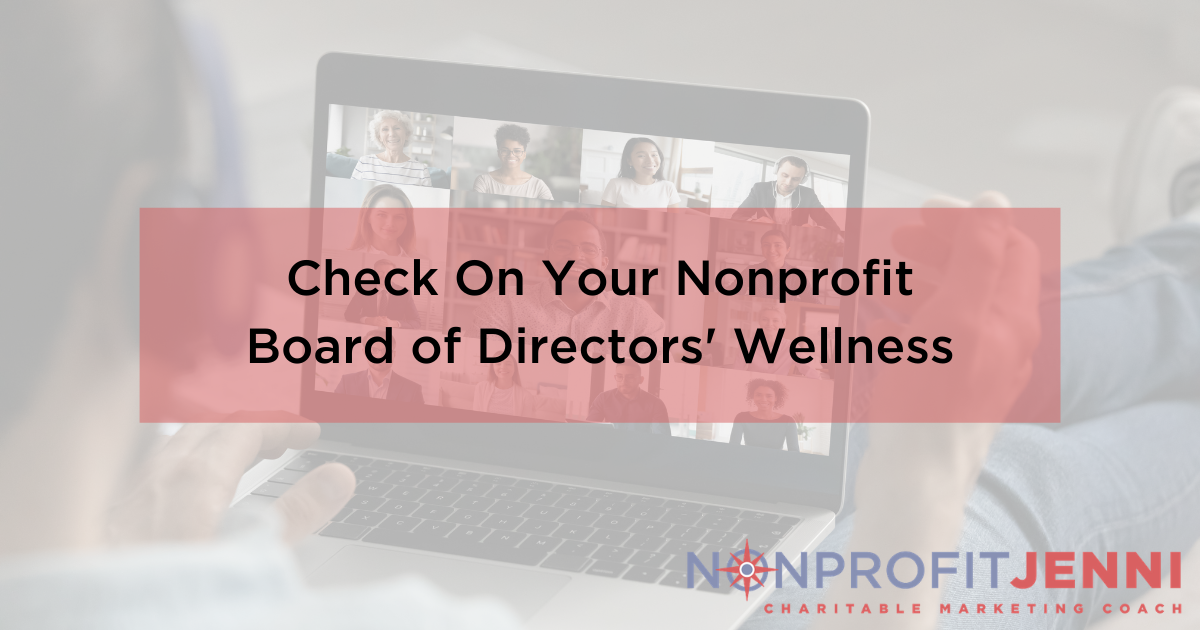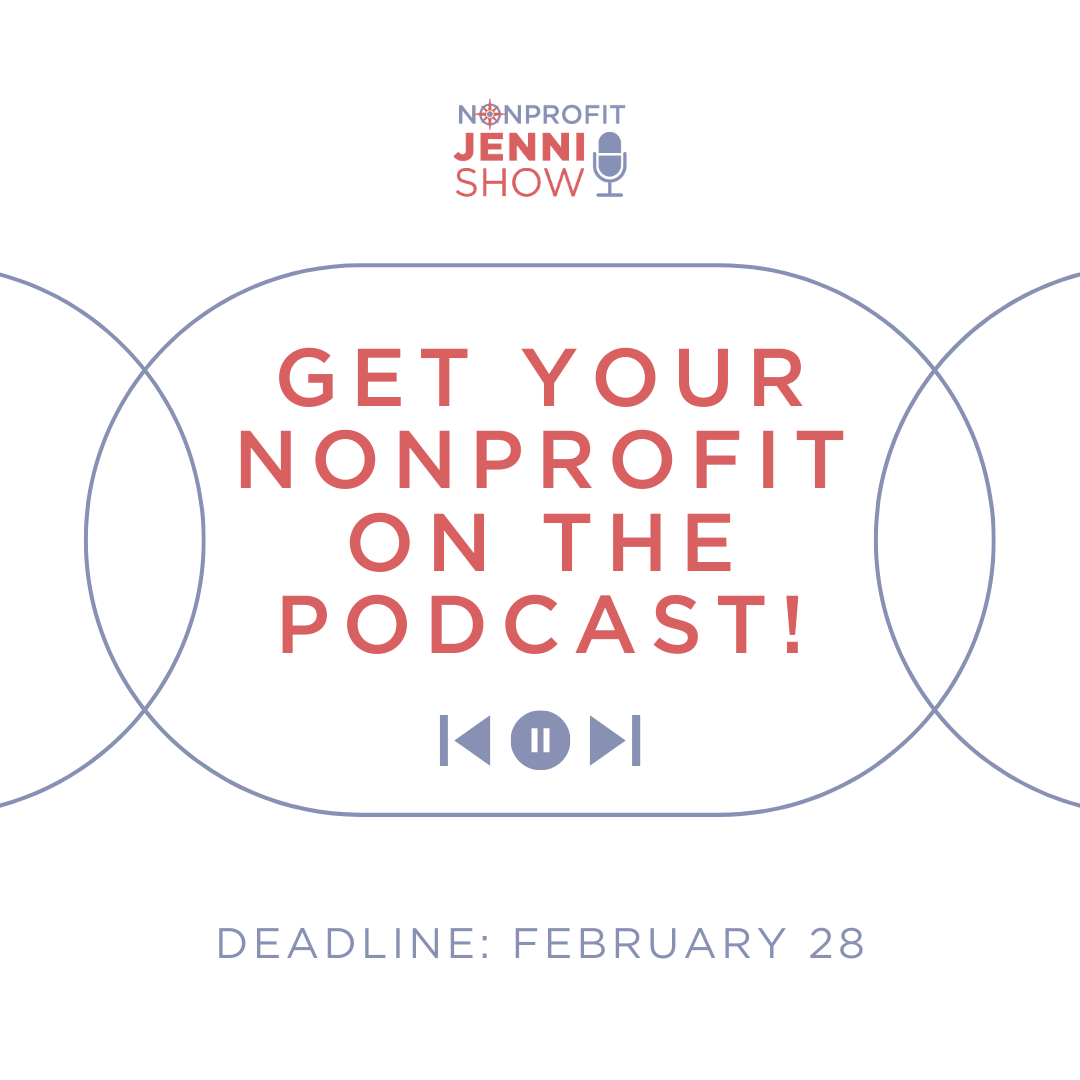This week on the Nonprofit Jenni Show, Becky Rossman, CEO of Neighborhood House, shares advice about how to conduct a governance audit with your board. She also gives a look inside her nonprofit’s processes for ensuring by-laws are up-to-date, setting expectations for board members, and considering collaboration opportunities with other organizations.
Get your nonprofit featured on the Nonprofit Jenni Show!
I can’t wait to tell you about my chat with Becky. But first, I have to share this exciting update about the Nonprofit Jenni Show: We are quickly approaching the release of our 100th podcast episode!
To celebrate, I'm featuring 100 nonprofits in the hundredth podcast episode, and I want your nonprofit to be one of them.
If you want to have your nonprofit included in this special episode, please fill out this short form. (It will take about 10-15 minutes to complete.) The deadline to submit your nonprofit’s information is February 28, 2021.
What to Include in Your Board Governance Audit
Becky Rossman is not only the CEO of Neighborhood House -- she’s also a nonprofit consultant specializing in board development. When Becky begins working with a new client, she always starts by conducting a governance audit with the board of directors. In our recent interview, she shares the primary components of her governance audits that apply to every type of nonprofit organization:
Review of all policies within the organization, including by-laws, personnel policies, financial procedure manuals, board manual, and all other internal policies
Reflection about whether the organization is in compliance with all policies, and whether some policies should be modified
Review of the most recent audits
Reflection of board diversity and performance
As you conduct your governance audit, Becky suggests considering how you can delegate the work. At Neighborhood House, the entire board doesn’t necessarily review every single policy. Different committees within the board can review the policies that fall within their areas of expertise. For example, the Financial Committee is the primary committee to review financial procedure manuals because the committee is made up of finance experts.
3 Simple Ways to Improve Your Board’s Performance
Becky has a wealth of advice to offer, and would love to consult with your organization to create a customized board development strategy. You can email her at beckyr@nhpeoria.org to learn more about her in-depth consulting services.
But Becky has a few simple suggestions that any nonprofit leader can implement to improve their board’s performance:
1. Set reasonable term limits, and abide by them. Term limits help bring fresh ideas and new audiences to your nonprofit, and also prevent burnout for your board members. At Neighborhood House, board members can serve two consecutive terms of three years, and then are asked to take a break of at least one year. Almost all board members continue to serve on a committee after their two terms are up.
2. Keep your board manual up-to-date, and use it! A board manual sets expectations ahead of time so prospective board members know exactly what you will need from them and whether they can make the commitment. In addition to board member expectations, Neighborhood House’s manual includes a copy of the by-laws, a confidentiality agreement, committee-related documents, information about who can speak on behalf of the organization, the past year’s audit, and a description of the board’s role versus the CEO’s role.
3. Leverage your network and community resources to recruit a diverse board. Becky says most of her directors come to Neighborhood House through her own network, and through the networks of her current board members. Becky also keeps an eye out at the Chamber of Commerce, Junior League, 40 Under 40, and other community leadership programs to recruit promising board members.
Don’t forget: I want to feature you on the podcast!
Before we wrap up, don’t forget to fill out this form so I can feature your nonprofit on the upcoming 100th episode of the Nonprofit Jenni Show! I’ll walk you through the steps for recording a short audio segment for the podcast. If your nonprofit is selected for the episode, I’ll also help promote your organization’s social media accounts and email list!



